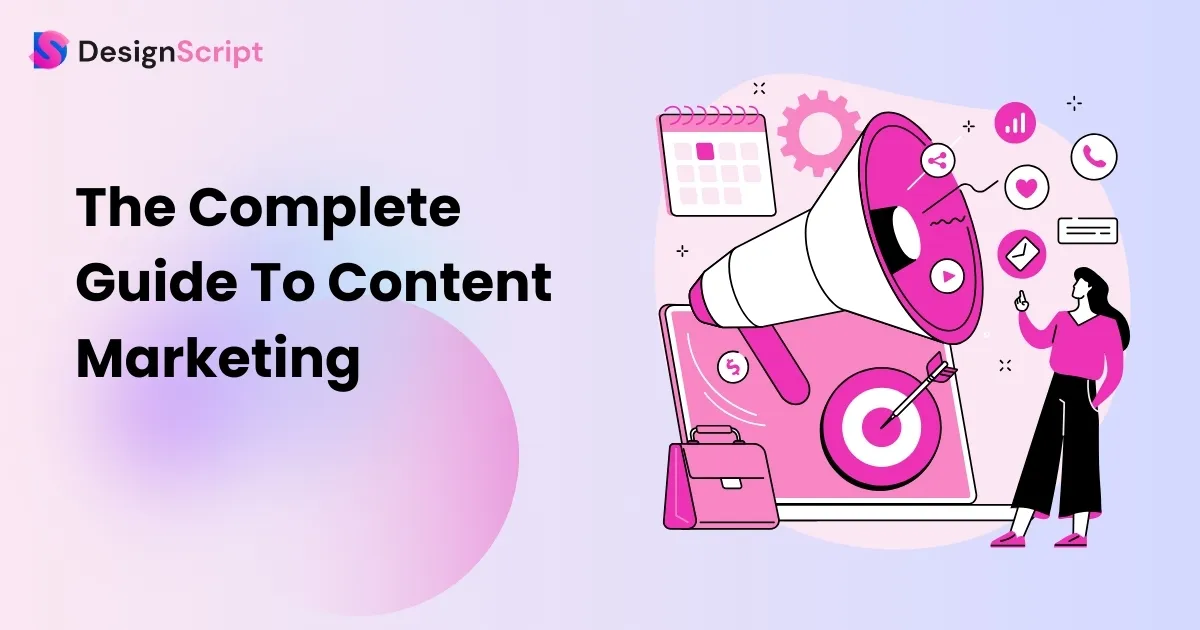The Complete Guide To Content Marketing
Content marketing can feel like a maze, leaving you lost and unsure about the right path for your business. This uncertainty often leads to missed opportunities and unrealized potential. But what if there was a roadmap to success?
This blog is that map. We’ll break down the complexities of content marketing and turn complex concepts into achievable steps. Whether you’re a beginner or a seasoned pro, this blog will provide you with insights and strategies. Get ready to set out on a journey to take your content marketing game to new heights!
Table of Content
- What Is Content Marketing?
- What Is The Purpose Of Content Marketing?
- Why Is Content Marketing Important?
- Types Of Content Marketing
- Content Marketing Examples
- How Does Content Marketing Work?
- Content Marketing Strategy
- Characteristics Of Effective Content Marketing
- How To Measure Content Marketing ROI?
- Content Marketing Tools
- The Future Of Content Marketing
- Use Content Marketing To Scale Your Business
- FAQs
What Is Content Marketing?
Content marketing is an effective marketing strategy. It involves crafting valuable, engaging content like blog posts, images, videos, and social media updates. The aim? Boost brand awareness and attract your target audience. To succeed, having a well-thought-out content marketing plan is essential. This plan helps you create and share content that has a clear purpose and is successful.
Your content calendar organizes when and where your content appears. It’s like a roadmap for your marketing journey. A good content strategy makes sure your email marketing, campaigns, and blog content match your goals.
The benefits? Increased customer engagement, more leads in your marketing funnel, and better brand visibility. If you follow content marketing best practices and use different content formats you can achieve your goals.
What Is The Purpose Of Content Marketing?

The goal of content marketing is to make content that informs, educates, and entertains, building brand awareness and trust.
Content marketing aims to connect with audiences by providing valuable, relevant information. Its purpose is to engage people, build trust, and ultimately drive profitable actions. Businesses aim to educate, entertain, or solve problems for their audience. They do this by sharing useful content instead of directly selling products or services.
This approach builds long-term relationships, encouraging brand loyalty and credibility. Businesses aim to attract, engage, and keep customers through various content forms. These include articles, videos, and social media posts. Content marketing serves to establish a brand’s expertise. It also increases brand awareness and guides customers along their purchasing journey. Ultimately, it’s about delivering meaningful content that resonates with the audience. It’s about establishing a connection that goes beyond mere transactions.
Why Is Content Marketing Important?
Content marketing is important because it helps:
1. Minimize Customer Acquisition Costs

Developing a solid content marketing strategy is a must for businesses. Writing blogs, making videos, and using social media help people know and buy your brand. This is because it attracts organic traffic. This approach saves money by improving marketing efforts compared to traditional campaigns.
2. Improve Lead Quality

Content marketing enhances lead quality by offering valuable information, attracting interested audiences. It educates and engages, guiding potential customers, making them more likely to convert. This method filters in high-quality leads. It ensures better prospects for sales and business growth.
3. Build a Solid Lead Pipeline

Consistent content creation is key for effective content marketing. Regular blog posts, videos, and social media updates establish a strong pipeline of leads. This content strategy nurtures relationships, boosts brand awareness, and drives engagement. A good content marketing campaign works well with a schedule and different types of content. This helps with successful marketing.
3. Retain Customers

Create useful content, such as blog posts or videos, to engage audiences on platforms like social media. This helps people recognize the brand, keeps them coming back, and builds loyalty.
Types Of Content Marketing
The following are a few types of content marketing:
1. Online Content Marketing

Online content marketing uses digital platforms like websites, blogs, and social media. It shares information, entertains, or educates audiences. It includes articles, videos, social media posts, and more to engage people online.
This method makes it easy for businesses to connect with their audience. It also helps them build trust and promote products or services effectively. Online content marketing boosts visibility by reaching a broader online audience.
It also encourages interaction through comments, likes, and shares. It’s about creating content that resonates with the online community. Overall, it enhances brand awareness and fosters customer relationships in the digital space.
2. Social Media Content Marketing

Social media content marketing involves crafting and sharing posts, videos, and images. This occurs on platforms like Facebook, Instagram, and X (formerly Twitter). It aims to engage and connect with audiences. It promotes products or services through entertaining, informative, or inspiring content.
This type of marketing leverages the interactive nature of social media. It fosters discussions, builds brand loyalty, and drives website traffic. Businesses can effectively communicate their message by tailoring content to suit each platform’s style and audience. They can also showcase their brand personality and encourage sharing. Ultimately, businesses expand their reach and build relationships with customers.
3. Infographic Content Marketing

Infographics are powerful tools in content marketing. They help present complex information visually, boosting brand awareness. To have a good content marketing plan, you should include infographics in your blog posts, social media, and emails.
4. Blog Content Marketing

Blog content marketing involves using blogs to promote brands, products, or services. It uses informative, engaging articles to connect with audiences. The articles provide valuable insights or solutions. These blogs boost brand visibility, attract potential customers, and establish credibility.
They’re versatile, catering to various topics, from how-to guides to industry news. Through blog content, brands share expertise, fostering trust and loyalty among readers. Its impact lies in engaging storytelling. It addresses customer needs and enhances SEO for higher online visibility. Blog content marketing serves as a valuable tool for brands. It helps them communicate, educate, and resonate with their target audience effectively.
4. Podcast Content Marketing

Podcasts are an essential part of content marketing, offering valuable insights and discussions. Through audio content, brands boost marketing efforts by sharing strategies, tips, and examples. They cover a range, from social media tactics to blog content creation, aiding in crafting effective marketing plans. These podcasts serve as a guide, outlining content strategy examples and best practices. They help people find brands, make good marketing plans, and understand different types of content.
6. Video Content Marketing

Video content marketing uses videos to promote brands, products, or services. In this type of content strategy, creators make engaging and informative videos. They do this to connect with audiences. These videos could be tutorials, testimonials, or storytelling pieces. They are shared on platforms like YouTube or social media. Video content marketing grabs attention, making complex ideas simple to understand. It helps build trust, boosts brand awareness, and drives engagement. Businesses use this strategy to showcase their personality, products, or expertise. They appeal to diverse audiences visually which enhances connections and conveys messages effectively through visual storytelling.
7. Paid Ad Content Marketing

Paid ad content marketing involves using paid advertisements to promote content. It includes sponsored posts, display ads, and paid search results that help reach a larger audience. Brands pay to feature their content prominently across social media, search engines, and websites. The ads are strategically targeted to specific demographics or interests. The aim is to attract and engage prospects. Through paid ad content marketing, companies can increase visibility. It lets them drive traffic and get prompt action from users. This method enables brands to boost their content’s reach swiftly and effectively.
Content Marketing Examples
Let’s explore some content marketing examples across different channels:
1. Example of Instagram Content Marketing
Starbucks uses Instagram to highlight new drinks, events, and community initiatives. They make their posts relevant to the current events along with encouraging customers to post images and tag Starbucks in it. This connects the company with coffee lovers worldwide.
Here the brand uses Instagram’s visual appeal to authentically connect with their audience. They build brand loyalty and increase engagement.

2. Example of Infographic Content Marketing
An infographic is a visual way to share information, like a colorful poster. For instance, National Geographic makes infographics showing animal facts. They use engaging images and facts to educate about wildlife.
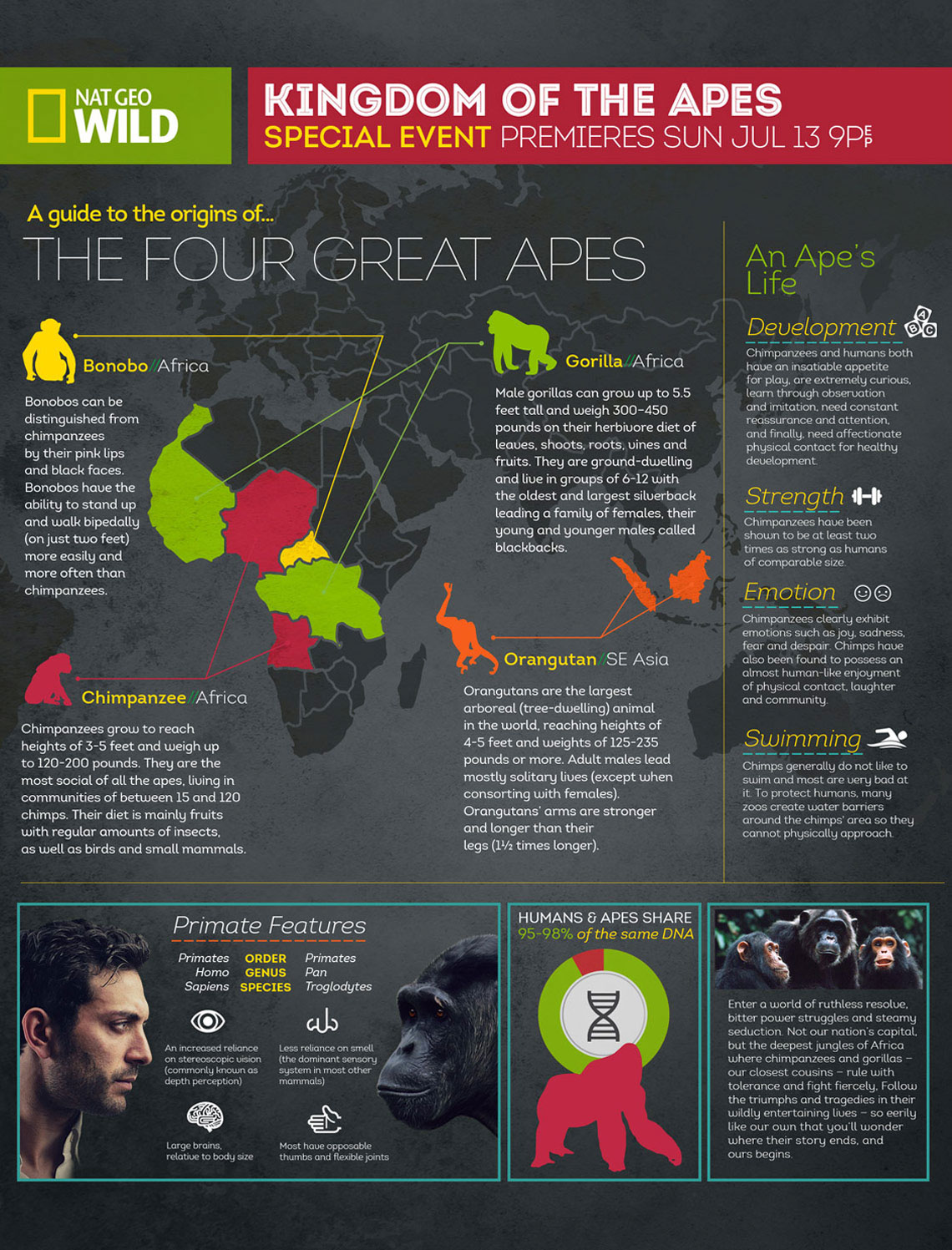
Infographics help simplify complex ideas into fun, easy-to-understand pictures. They make information interesting and memorable for their audiences.
3. Example of Blog Content Marketing
Blog Content Marketing involves brands creating informative, engaging blogs. They do this to attract and retain audiences. HubSpot is a software company. They excel by offering comprehensive marketing guides and insights through its blog. This draws in marketers and business enthusiasts.
Another example is Buffer, a social media management tool. They share valuable tips and strategies on their blog to enhance their credibility.
These brands use blogs to educate, entertain, and establish authority. Ultimately, they foster stronger connections with their target audience. They showcase expertise and provide real value through consistent, valuable content. This strengthens their brand presence.
4. Example of Podcast Content Marketing
Podcast Content Marketing involves creating audio shows. These are like TED Talks or NPR’s “How I Built This.” They aim to share insights, stories, and expertise. TED Talks cover diverse topics from science to storytelling, amplifying ideas. NPR’s “How I Built This” dives into entrepreneurs’ journeys, spotlighting success stories. These podcasts engage audiences through compelling narratives, building a loyal following. Brands use podcasts to discuss, interview, and share knowledge, connecting authentically with listeners. They use this medium to showcase expertise, entertain, and foster a community. Ultimately, they enhance brand awareness and loyalty.
5. Example of Video Content Marketing
Video Content Marketing involves using videos to promote products, educate, or entertain audiences. For instance, Blendtec’s “Will It Blend?” series showcases their blender’s power by blending unusual items.
Dove’s “Real Beauty Sketches” highlights self-esteem, aligning with their brand message.
GoPro shares user-generated adventure clips, promoting their durable cameras.
Red Bull creates extreme sports content, like the “Stratos” jump. This links adrenaline to its brand.
These examples illustrate how brands leverage videos. Blendtec uses videos for product demonstration. Dove uses videos for empowerment. GoPro uses videos for user-generated content. Red Bull uses videos to associate their brand with high-energy experiences.
6. Example of Paid Ad Content Marketing
Paid ad content marketing involves sponsored content to promote products or services. For instance, Nike uses sponsored posts on social media, showcasing new sneakers to reach a wider audience.
Coca-Cola creates engaging videos on YouTube, highlighting their brand through entertaining content. These ads blend seamlessly into users’ feeds, engaging them while subtly promoting the brand.
On search engines, Google Ads appear at the top, promoting businesses based on search queries. These examples illustrate how brands like Nike and Coca-Cola leverage paid ad content marketing across platforms to connect with audiences and boost sales. Businesses also use this strategy.
7. Example of X Content Marketing
X (formerly Twitter) content marketing showcases brands like Wendy’s, known for witty banter and engaging with customers, boosting their visibility and appeal.
Another example is Nike, which uses X for product launches, promotions, and athlete endorsements, creating buzz and brand loyalty. These strategies illustrate how X becomes a stage for brands like Wendy’s and Nike to interact, advertise, and build strong connections with their audiences through engaging content, clever messaging, and timely responses.
8. Example of TikTok Content Marketing
TikTok’s content marketing shines through brands like Chipotle, sharing DIY recipes and engaging challenges, while The Washington Post delivers news in bite-sized videos.
Gymshark flaunts fitness routines and behind-the-scenes glimpses.
Guess spotlights fashion trends and influencers, and NBA highlights player stories and game clips.
These brands use TikTok’s platform creatively, offering value, entertainment, and connection to their audiences through diverse content strategies. Chipotle’s recipes engage food lovers, The Washington Post shares news, Gymshark motivates fitness buffs, Guess promotes fashion, and NBA captivates sports fans, all showcasing varied, engaging approaches to content marketing on TikTok.
How Does Content Marketing Work?

Content marketing operates at different stages of the marketing funnel, each serving specific purposes.
1. Top of the Funnel (TOFU)
At this stage, the focus is on grabbing the attention of potential customers. Here, content aims to create brand awareness and generate interest in a non-intrusive way. Blog posts, social media updates, and engaging videos are crafted to resonate with broader audiences. For example, a skincare company might write a blog about “10 Tips for Healthy Skin” to attract people interested in skincare. These TOFU materials inform, entertain, and can be easily shared to get more attention.
2. Middle of the Funnel (MOFU)
As prospects move further down the funnel, they want more specific information and solutions for their interests. This is where content gets more detailed and addresses the needs or challenges of the audience. Content formats like in-depth guides, case studies, or webinars become valuable. One example is a skincare company that provides a detailed guide on choosing the right skincare routine for your skin type. They offer solutions and subtly promote their products within the content.
3. Bottom of the Funnel (BOFU)
Here, the focus is on conversion. Content is tailored to help prospects make a purchasing decision. It includes product demos, free trials, or client testimonials. To encourage potential customers to buy, the company could share customer success stories or provide a free trial kit. Email marketing is important for delivering targeted content that helps guide prospects to make a purchase.
To create a smooth journey from awareness to conversion, use different content types and channels. This aligns the stages and makes your marketing strategy more uniform. Consistency and relevance throughout these stages contribute to building brand loyalty and advocacy.
Content Marketing Strategy
Crafting an effective content marketing strategy involves several key steps. Every stage is important in improving the impact of your content, from finding your audience to measuring results.
1. Identify your target audience

Understanding your audience is key in content marketing. Who you target matters—know their needs, preferences, and issues. It’s vital for your marketing strategy. From social media to blog posts, your content efforts should align with your audience. Building a content plan tailored to them boosts brand awareness.
2. Set SMART goals

In content marketing strategies, “Set SMART goals” means creating Specific, Measurable, Achievable, Relevant, and Time-bound objectives. It involves defining clear, detailed aims for your content efforts. Specific goals outline clearly what you want to achieve. Measurable goals ensure you can track progress. Achievable goals are realistic within your means. Relevant goals align with your brand and audience. Time-bound goals have a deadline for accomplishment. Setting SMART goals in content marketing helps focus efforts, measure success, and guide the creation of content that is in alignment with your brand’s vision and engages your audience effectively.
3. Determine your KPIs
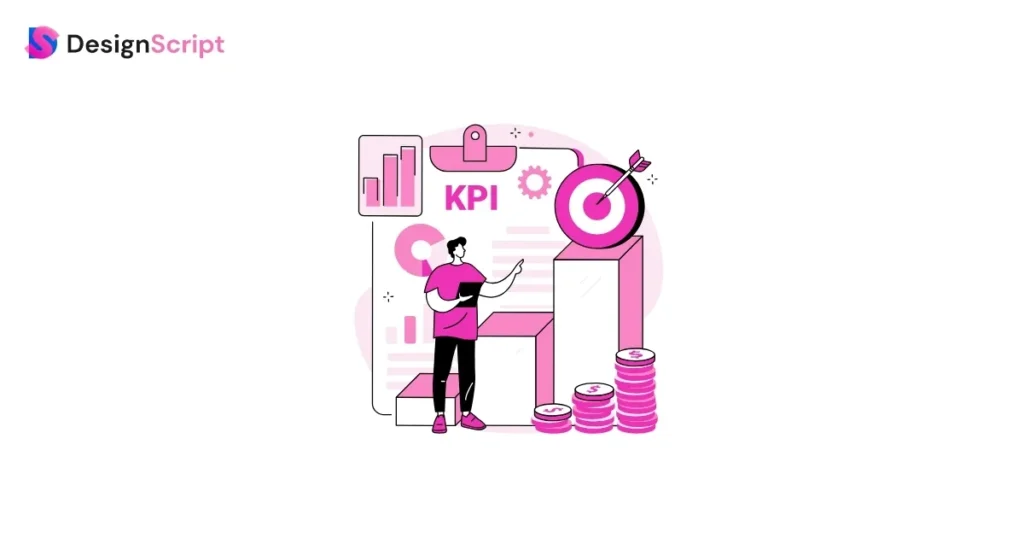
Decide what you want to achieve with your content. KPIs, or Key Performance Indicators, are goals showing how well your strategy works. They help measure success, like tracking website visits or sales. Choosing KPIs depends on your aims: more traffic, sales, or engagement. Clear KPIs guide your content creation and show if you’re reaching your goals. For instance, if you aim for more sales, track how many purchases your content generates. Understanding and picking the right KPIs is crucial in shaping an effective content strategy, making sure you’re on track to meet your objectives.
4. Finalize the type of content and content formats

When you hit the “Finalize the type of content and content formats” stage in your content marketing strategy, it’s time to make concrete decisions. You’ll go through options like videos, articles, or images and decide what suits your brand’s message best. This step involves more than just picking; it’s about tailoring the style and presentation of your content. Whether it’s a catchy video series, informative articles, or captivating visual stories, your choice of format shapes how your audience connects with your brand. Consider what resonates most and aligns perfectly with your brand’s voice and goals to create engaging, memorable content.
5. Pick your content channels

Selecting the right content channels is crucial in content marketing strategies. It involves identifying the platforms, such as social media, blogs, videos, or podcasts, that align with your audience’s preferences and behaviors. By tailoring content to these specific channels, you maximize its relevance and resonance. Every platform has unique characteristics and audience demographics, so understanding and utilizing these differences optimizes your reach. This strategic selection not only amplifies your message but also enhances engagement, fostering stronger connections with your target audience. The careful curation of content channels ensures your message is seen by the right people, in the right place, and at the right time.
6. Set a budget

Allocate money for content marketing activities. Determine the amount you can spend on creating and promoting content. This budget helps decide the scale and types of content you can develop. It ensures a clear roadmap for your strategy, making choices easier for where and how to invest in content creation, distribution, and promotion. A set budget also allows tracking expenses and evaluating the return on investment (ROI) from your content marketing efforts. Adjustments can be made based on the budget’s success, optimizing your strategy for better outcomes and efficient resource use.
7. Chalk out a content publishing schedule

Plan when to publish your content. Set a schedule for sharing your articles, videos, or posts. This helps keep things organized and ensures a steady flow of material for your audience. Timing matters—know when your audience is most active and engaged to get the most out of your efforts. A content publishing schedule helps you stay consistent, making it easier for people to follow and anticipate your updates. It’s like a roadmap guiding you on when to release your content, making your strategy more effective and impactful.
8. Create and distribute the content

Crafting and sharing content is what “Create and distribute the content” means in content marketing strategies. It involves making engaging materials like articles or videos, then putting them out where your audience can find them. This step ensures your message reaches the right people through channels like social media or websites. By creating compelling content and sharing it wisely, you grab attention, connect with your audience, and boost your brand’s visibility. It’s about making valuable information and stories that resonate with your audience and reaching them in the places they spend time online.
9. Analyze and measure results

Check and understand what’s working! Analyzing and measuring results in content marketing means looking closely at how well your strategies are doing. It’s like checking your steps on a map to see if you’re going the right way. By tracking things like how many people read your content or how they interact with it, you figure out what’s effective. This helps adjust your plan, focusing more on what clicks with your audience. It’s about using numbers and data to make smart choices, ensuring your efforts are hitting the bullseye for your brand’s success.
Characteristics Of Effective Content Marketing
Explore the key traits defining effective content marketing.
1. Provides value beyond the product or services you offer
Effective content marketing goes beyond mere promotion. It focuses on delivering useful information and insights to your audience. By addressing their needs, concerns, and interests, it becomes more than just selling – it becomes a valuable resource. You can share what you know with others by writing blogs, posting on social media, or making videos.
2. Targets readers’ specific buying journey stage
Content marketing should be tailored to where your audience is in their purchasing journey. Whether they’re just starting to explore solutions, comparing options, or ready to make a decision, your content needs to align. Using keywords for each stage of the buyer’s journey helps your content appear when your audience is looking for information. This makes your brand more visible and relevant.
3. Provides a consistent brand voice and image
Consistency is key in content marketing. Reinforce your brand’s identity by keeping a consistent brand voice and image across all content. Consistency helps customers recognize your brand and trust it, making it easier to connect with your business.
4. It is timely and engaging
Timeliness and engagement are crucial in content marketing. Sharing relevant and up-to-date information keeps your audience interested. To get your audience’s attention, use various types of content like videos, blog posts, or interactive materials. When people interact with your content, like leaving comments or sharing it, they feel more connected to your brand.
Businesses can connect with their customers and raise brand awareness through various content marketing strategies. This helps drive successful marketing campaigns.
How To Measure Content Marketing ROI?

Measuring content marketing return on Investment is essential for measuring the outcome of your content strategy. To begin, identify key metrics aligned with your marketing goals, like brand awareness or engagement. Tools like Google Analytics track website traffic, showcasing the impact of blog posts, social media, or video content.
Calculating ROI involves comparing investment (time, money, resources) against outcomes. For instance, tally expenses for content creation, marketing campaigns, and distribution channels. Then, assess how these efforts affect your objectives. Are more leads generated? Is there an uptick in sales or email sign-ups?
Evaluate content format effectiveness—videos, blogs, or emails—based on audience interaction. By using a marketing funnel, you can analyze how well each stage’s content is performing. This allows you to make adjustments for better results.
Successful content marketing isn’t solely about numbers; quality matters. Analyze audience feedback, comments, and shares. Effective content resonates, driving meaningful engagement and building a loyal audience.
Content Marketing Tools
To excel in content marketing, leveraging the right tools can significantly enhance your efforts. Here’s a rundown of some top-notch tools that can amplify your content marketing efforts:
1. HubSpot

HubSpot is a popular marketing platform. It offers email marketing that helps businesses with lead generation, tracking, and nurturing.
With HubSpot, you streamline your content marketing efforts effortlessly with their free AI content writer. You can use it to write blogs, web copies, and posts for social media.
2. Canva

Canva is a helpful content marketing tool that makes designing images & infographics easy. It offers various templates for social media, posters, and more. With Canva, you can create eye-catching visuals by adding text, images, and shapes. It’s user-friendly, letting you customize designs without any design skills.
Canva simplifies content creation for blogs, ads, and presentations, helping businesses craft engaging content to attract and connect with their audience effectively.
3. BuzzSumo
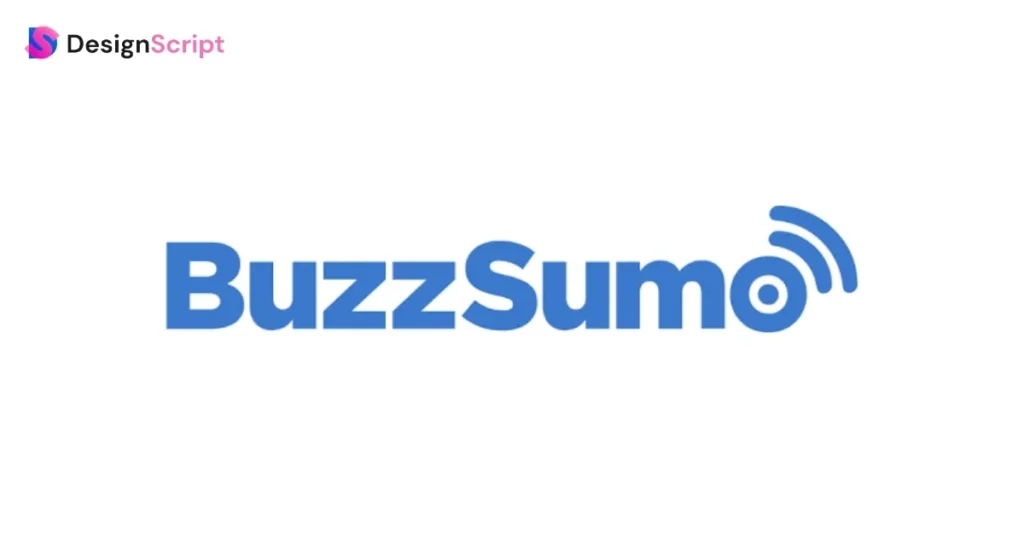
BuzzSumo is a tool that helps discover popular topics online. It reveals the most-shared content across social media platforms, guiding content creators on what resonates with the audience. It highlights influential authors and tracks competitors’ performance, aiding in content strategy. With its search function, users find trending topics or specific keywords, aiding content ideation. BuzzSumo’s analytics provide insights into content performance, aiding in refining strategies. Overall, it’s a valuable tool for content marketers, enabling them to create engaging content aligned with audience interests and market trends.
4. Semrush
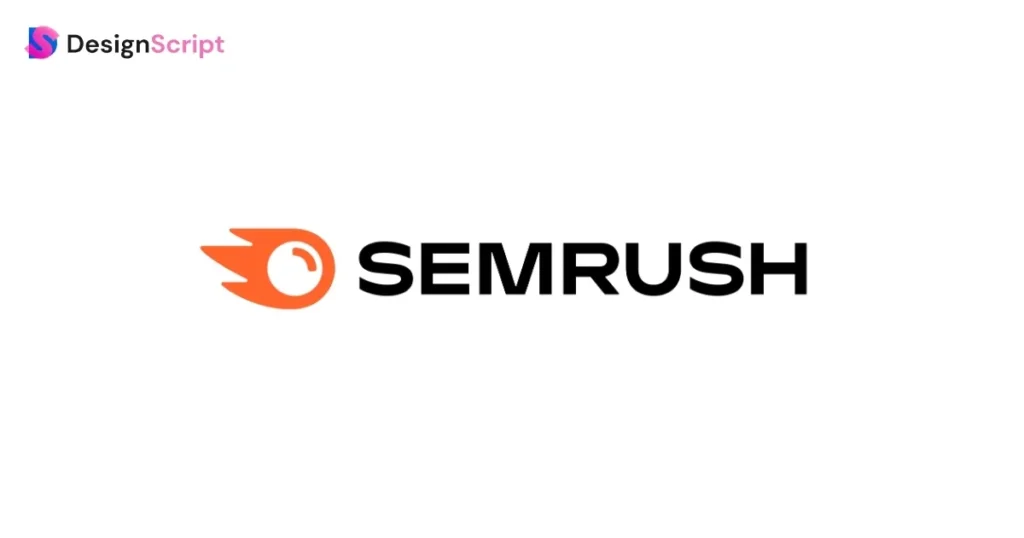
Semrush offers keyword research, helping find popular words people search for, aiding content creation. It provides tips to create content that ranks high on SERPs. Its competitor analysis tracks rivals’ strategies, revealing insights to refine your own. Additionally, there’s backlink analysis that helps understand site connections for improved authority. Semrush equips marketers with valuable insights, enhancing content quality, and aiding in crafting strategies for successful online presence and growth.
5. Google Analytics

Google Analytics is a free tool. It helps track website traffic and understand user behavior. Study how your content performs (blogs & web pages) to improve marketing and raise brand awareness. By using Google Analytics, you can set goals for your content marketing and measure success with statistics.
6. Ahrefs
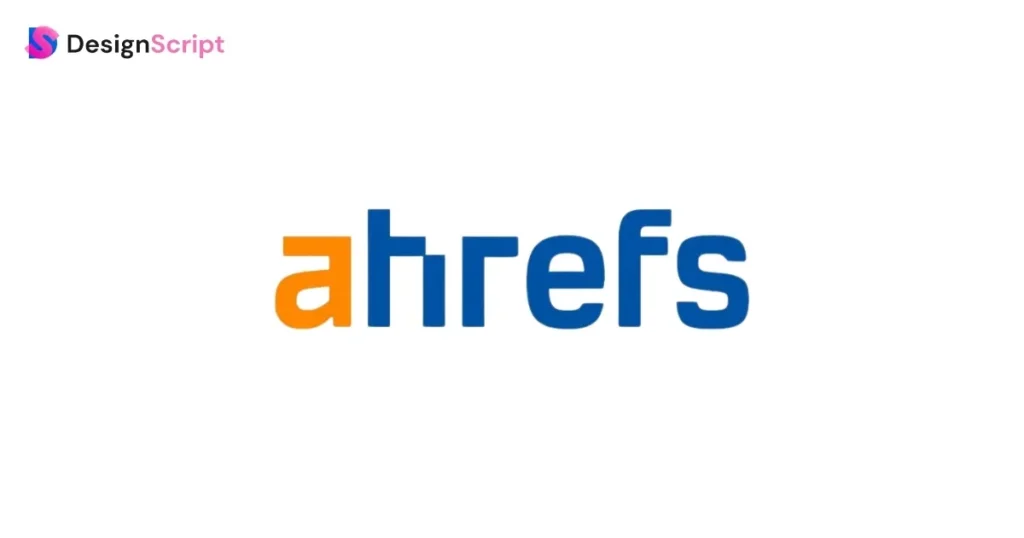
Ahrefs, a powerful SEO tool, aids in analyzing rivals, finding keywords, and tracking links. By studying competitors, it shapes effective content plans for content marketing efforts. This is a helpful resource for learning about marketing, making your brand more well-known, and creating better content.
The Future Of Content Marketing
The future of content marketing holds exciting prospects, shaped by evolving technology and changing consumer behaviors. As digital landscapes expand, content marketing will become even more personalized, interactive, and immersive.
One prominent trend is the rise of interactive content. It’s like content that shakes hands with you! Things like quizzes, polls, and interactive videos where you don’t just watch but also participate. This kind of content engages audiences more deeply, making them active participants instead of passive observers.
Moreover, personalization is set to skyrocket. Brands are getting super savvy at tailoring content to suit individual preferences. Imagine content that feels like it’s made just for you, addressing your specific interests and needs. This personal touch not only grabs attention but also builds stronger connections between brands and their audience.
The way people consume content is changing too. Short-form content like bite-sized videos and stories is gaining massive traction. Snappy, quick, and easy to gulp down, these formats suit the fast-paced lifestyles of today. Plus, audio content, like podcasts and voice-activated experiences, is booming. People love to listen while multitasking, driving, or relaxing.
But wait, the future isn’t just about shiny new tech. Trust and authenticity remain gold! Authenticity in storytelling is becoming crucial. People crave real stories that resonate with them, not just flashy advertisements. Brands that can speak from the heart and genuinely connect with their audience will shine bright.
In essence, the future of content marketing revolves around meaningful interactions, tailored experiences, and genuine connections. It’s all about engaging, delighting, and staying true to the audience. As technology keeps evolving, successful content marketing will continue to blend innovation with sincerity, ensuring that brands can truly touch hearts and minds in the ever-evolving digital realm.
Use Content Marketing To Scale Your Business
Content marketing is a key tool for businesses today. It uses different kinds of content like blogs, videos, and social media to reach people. When planned well and matched with marketing steps, it boosts how much people know about a brand and draws in possible customers.
Content marketing gives many benefits, like making a brand known, showing it as a leader, and building trust with customers. A good plan, based on examples and stats, helps set goals and bring fresh ideas.
In the end, success in content marketing comes from having a clear plan and sticking to it. With our inputs you can definitely bring your brand to the limelight.
You can thank us once your content marketing efforts give you results.
FAQs
Q1. What makes content marketing more effective?
Content marketing is considered effective when it creates valuable and relevant content. This content attracts and engages a specific audience. Sharing helpful information and entertaining content builds trust and relationships with potential customers.
Q2. How is content marketing different from traditional advertising?
Content marketing differs from traditional advertising in its approach and purpose. Ads promote products or services. Content marketing offers valuable info or entertainment. The main focus is to connect, provide useful things, and influence people’s actions through trust and credibility.
Q3. Which metrics are crucial for measuring content marketing success?
Several metrics are crucial for measuring content marketing success. These include engagement metrics like clicks, likes, shares, comments, and time spent on content. Conversion metrics such as lead generation, sales, and subscriptions are also important.

